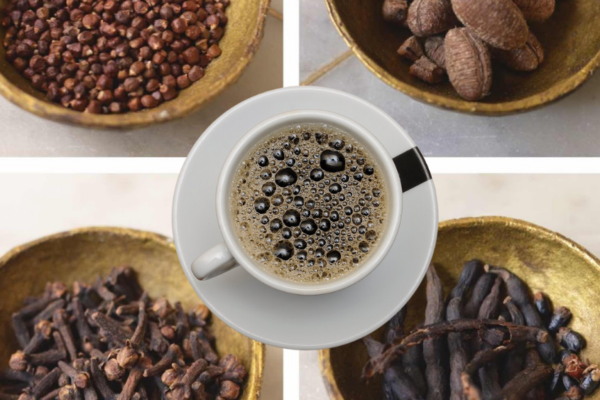We can note that Africa was a prime target for colonization because of its rich fertile lands and abundance of natural resources. Since colonial times, several food crops introduced to and found to thrive in Africa have become highly important in Africa’s socio-economic interaction, culture, and development. They are now African staple food crops growing abundantly in the continent though they originated from other countries. For example, one of Africa’s most widely consumed and multi-purpose food crops, cassava, originates from west-central Brazil.
African staple foods are diverse, exotic, and highly sought after, encouraging their exportation. For enlightenment on Africa’s various staple food crops, we have listed nine crops.
Curry
Curry is a primary ingredient in several African meals. From being a taste enhancer in vegetable dishes to being a fantastic spice for fish and meat dishes, curry’s versatility has been essential. Additionally, curry has a very distinct flavour that you can’t mistake for any other.
The curry plant is evergreen, and when processed, it is powdery and yellow. Its origins in Africa trace down to the early construction of the railway to Uganda. Then, Indians migrated to Africa, bringing their abundant spices, herbs, and medicines. The curry plant has been a flourishing spice plant in Africa.
Okra
Popular in African cooking for its seedpods, okra is a flowering vegetable plant grown in the tropical, subtropical, and warm temperate regions.
The okra plant is green and long, grows out of a stalk, and has a pointy end and slimy interior. Several countries worldwide enjoy okra and eat it alongside other vegetables, meat, or fish.
Banana
Bananas are available in several different arrangements, sizes, and colours, including yellow, green, red, and even blue! They are lovely, and although they originate from the tropical parts of Asia, Arabians started growing them in the northern part of Africa.
Bananas now grow in many African countries as a staple food. They are popular because of their taste, nutritional value, fibre, banana wine, and ornamental purposes. The Matoke banana species is the most common in Africa.
Nutmeg
Nutmeg is another spice seed that is common in Africa. Like most of Africa’s spice plants, nutmeg has a distinctive smell and taste. It originated in Moluccas, Indonesia, and European traders introduced it to Africa.
The nutmeg tree has dark evergreen leaves. Nutmeg comes from the seed, and mace (another spice) is made from the basis covering. The seed is hard and oval. It can be ground into powder or used in small bits. It is a cooking spice and nutmeg oil and nutmeg butter source.
Cumin
A tabletop staple in African cooking, cumin is an essential spice. The use of cumin started in North Africa before it got to the central parts of Africa. It originates in ancient Egypt, around the Eastern Mediterranean, and India.
Cumin seeds are harvested from the garden plant’s fruit and then dried. They are brownish-yellow in colour and also produce oil. Cumin seed is fantastic when used to cook chicken and meat dishes. The oil is good for the skin and cooking – having a warm, nutty, spicy smell and taste. Many people grow cumin as a garden plant.
Coffee
Coffee could be one of the most consumed beverages in the world. Although more than 170 countries worldwide now produce coffee, it originates from the Ethiopian ancestors of the Oromo people, rumoured to have first acknowledged the coffee plant’s energizing effect. Although the initial part of Africa where coffee was first grown is unknown, coffee has become a significant foreign exchange earner. Many African countries also produce it for local consumption.
Diving into African history and culture, native religious ceremonies competing against the Christian church in East Africa used coffee, causing the ban of coffee consumption generally until the Ethiopian emperor, Menelik II.
Yams
When peeled, yams are delicious, fleshy, white, or cream. There are many ways to enjoy yams: boiled, fried, roasted, baked, mashed, or made into chips and even flour for baking and other cooking purposes. They are the primary agricultural produce in West Africa, which produces over 95 per cent of yams globally.
Yams also have a reasonably long shelf life. Africans store yams in barns for as long as six months without refrigeration, making them very valuable during food scarcity before the rainy season.
Cassava
Cassava is an essential food crop in Africa. It is the third most consumed carbohydrate food source globally and a primary staple in developing countries, feeding hundreds of millions. In addition, it is drought-resistant and can grow on marginal soils. Cassava tubers come in different sizes and are white and fleshy inside. Nigeria is the primary producer of African cassava for export.
Palm Oil
Palm oil usage dates back five thousand years in West Africa and West and Southwest Africa. It commonly grows between Gambia and Angola.
Scotsman William Sime and an English banker, Henry Darby, introduced oil palms to Malaysia (formerly known as the British Colony of Malaya) in 1910. The palm tree species Elaeis guineensis was taken from Nigeria to Eastern Malaysia in 1961.
Palm oil has been an essential means of trade in Malaysia and West Africa, being exported to many countries globally and consumed locally by Africans. It is red with a sweet taste. Palm oil comes from ripe harvested palm nuts that are beaten, juiced, and processed into edible oils used in cooking, creams and soaps. In addition, the leftover fibres serve as fuel.
African staple foods are so many more than those listed above. Africa’s food tray is colourful, diverse, and exotic, with several food crops representing several cultures and regions. The array of foods, origins, and variety represents the diversity of black culture and the range of people Africa has welcomed to its borders through the centuries. To learn how to cook these African staple foods authentically, here is a list of books to help you do just that.





